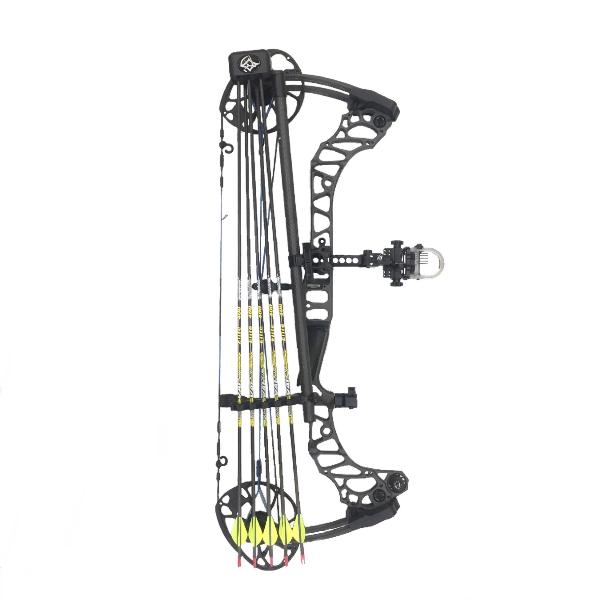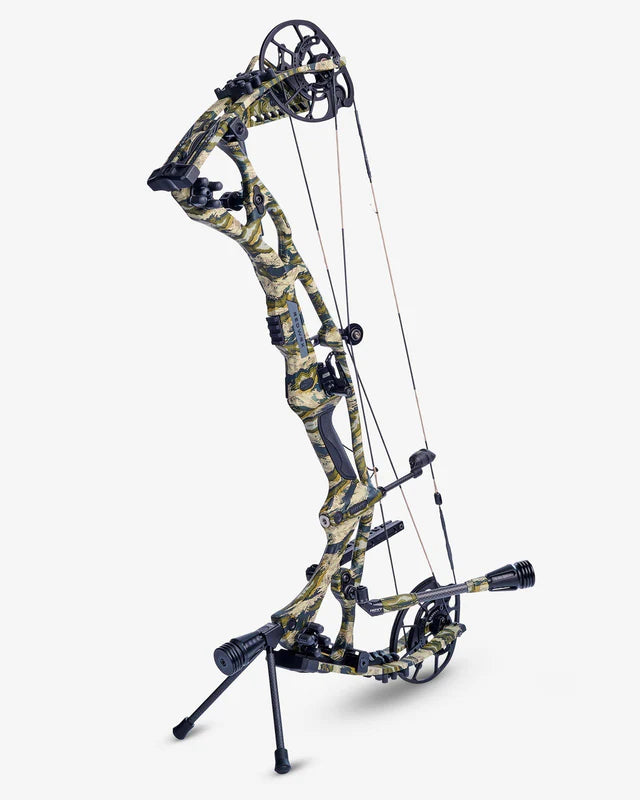The Ultimate Guide to Choosing the Right Archery Stabilizer for Boosted Precision
Amongst the various accessories available, an archery stabilizer plays a substantial duty in improving precision. In this detailed overview, we will explore the key elements to consider when picking an archery stabilizer for enhanced precision. Whether you are a seasoned archer looking to update your devices or a beginner looking for assistance, join us on this trip as we unwind the keys to choosing the ideal archery stabilizer.
Size: Discovering the Ideal Stabilizer Length
Determining the suitable stabilizer length is important when choosing an archery stabilizer for ideal efficiency. A stabilizer that is too long can make the bow feel tough and top-heavy to regulate, while a stabilizer that is also brief might not provide sufficient stability and dampening of vibrations.
A longer stabilizer, generally ranging from 8 to 12 inches, can offer better security and lower bow torque. This is especially valuable for archers that shoot with a high draw weight or those who have a propensity to torque the bow during the shot. The added size helps to disperse the weight evenly and counterbalance any kind of torque or movement.
On the various other hand, a shorter stabilizer, usually in between 4 to 7 inches, offers a lot more ability to move and quicker response. It is favored by archers who fire with a reduced draw weight or those that need even more movement, such as hunters or 3D shooters. The shorter length enables for easier motion with tight areas and faster modifications.
Inevitably, the optimal stabilizer size is an issue of individual choice and shooting design. It is suggested to trying out different sizes and observe the results on security and precision. Consulting with seasoned archers or professionals can also provide useful understandings and referrals.
Weight: Determining the Appropriate Stabilizer Weight
After thinking about the ideal stabilizer size, the next crucial aspect to think about when selecting an archery stabilizer is figuring out the suitable stabilizer weight - archery stabilizer. The weight of the stabilizer plays a crucial duty in enhancing precision and security throughout the shot
The weight of the stabilizer impacts the equilibrium and control of the bow. A much heavier stabilizer can give increased stability and control, especially for shooters with a tendency for unsteady hands or inconsistent shots. It aids to absorb the resonances and recoil created by the bow, lowering torque and decreasing the impact on the arrow's trip.
On the various other hand, a lighter stabilizer enables for a quicker and much more responsive bow. It can be advantageous for shooters that prioritize ability to move and speed over security. Lighter stabilizers likewise lower fatigue throughout lengthy shooting sessions or competitions.
To determine the proper stabilizer weight for your demands, it is essential to consider your shooting design, physical stamina, and bow arrangement. Try out various weights and observing the influence on your capturing performance is crucial to finding the excellent balance.
Ultimately, the ideal stabilizer weight will differ for every individual archer. It is advised to begin with a moderate weight and make adjustments based upon personal choice and shooting outcomes. Keep in mind, the objective is to achieve a regulated and steady shot, while also keeping comfort and simplicity of usage.
Materials: Picking the Right Materials for Resilience and Efficiency
When selecting an archery stabilizer, it is vital to meticulously think about the products made use of in its building to make certain resilience and maximize performance. The choice of materials can substantially affect the total high quality and effectiveness of the stabilizer.
One of one of the most generally used materials for stabilizers is carbon fiber. Carbon fiber provides a high strength-to-weight ratio, making it lightweight yet extremely solid. This product minimizes and takes in resonances bow torque, resulting in improved security and precision. Furthermore, carbon fiber stabilizers are resistant to temperature adjustments and are much less most likely to warp or bend in time.
Another popular material for stabilizers is light weight aluminum. Aluminum stabilizers also use a vast array of modification choices, enabling archers to adjust the weight and size to suit their preferences.
Some stabilizers are constructed making use of a mix of materials. A stabilizer may have a carbon fiber core wrapped in an aluminum shell. This hybrid design integrates the finest qualities of both products, supplying optimal stability, resilience, and efficiency.
Design: Recognizing the Different Stabilizer Layouts and Their Effects
Thinking about the products used in archery stabilizers, it is very important to now delve right into the various styles of stabilizers and their corresponding impacts. The design of an archery stabilizer plays an essential function in enhancing accuracy and lowering resonance throughout the shot. There are numerous different styles readily available in the marketplace, each with its own one-of-a-kind attributes.

An additional popular design is the side bar stabilizer. This layout entails connecting a short pole to the side of the bow, parallel to the primary long pole. Side bar stabilizers assist in counteracting the weight of devices, such as sights or quivers, and supply additional security to the bow.
Some stabilizers include adjustable weights. These stabilizers allow archers to tweak the equilibrium and feeling of their bows by adding or eliminating weights. This feature is particularly valuable for archers that like a details weight circulation or wish to experiment with different setups.
Furthermore, some stabilizers incorporate wetting modern technology to reduce vibration and sound. These stabilizers usually have integrated dampeners or use products that absorb resonances, causing a smoother and quieter shot.

Devices: Exploring Additional Accessories for Improved Stability
These devices are made to function in conjunction with the archery stabilizer to provide an even greater degree of security and accuracy. One such accessory is the V-bar or the side stabilizer mount.
One more accessory that can boost security is a bow sling. A bow article sling is a strap that affixes to the bow and permits the archer to keep a kicked back grip on the bow handle without the worry of dropping it (archery stabilizer). This unwinded grasp assists to lower muscular tissue tension and allows for a more stable and constant shot
Additionally, a stabilizer weight anonymous system can be used to make improvements the equilibrium and stability of the bow. These weight systems normally include small weights that can be added or removed from the stabilizer to readjust the balance point of the bow. By locating the ideal balance factor, archers can accomplish a much more exact and stable shot.
Verdict
Finally, picking the right archery stabilizer involves taking into consideration variables such as size, weight, materials, style, and additional devices. The optimum stabilizer length and weight will certainly rely on individual choices and shooting style. Picking sturdy products is vital for long-lasting efficiency. Understanding the different stabilizer layouts will aid boost accuracy. Discovering added accessories can further boost stability Read Full Report during archery shooting.
Figuring out the ideal stabilizer length is essential when choosing an archery stabilizer for optimal efficiency. A stabilizer that is too long can make the bow feel difficult and top-heavy to control, while a stabilizer that is as well brief might not supply enough stability and dampening of resonances - archery stabilizer.Taking right into account the materials utilized in archery stabilizers, it is crucial to currently dive into the different designs of stabilizers and their respective effects. Side bar stabilizers help in reversing the weight of accessories, such as sights or quivers, and offer added security to the bow
These weight systems normally consist of tiny weights that can be added or eliminated from the stabilizer to adjust the equilibrium factor of the bow.